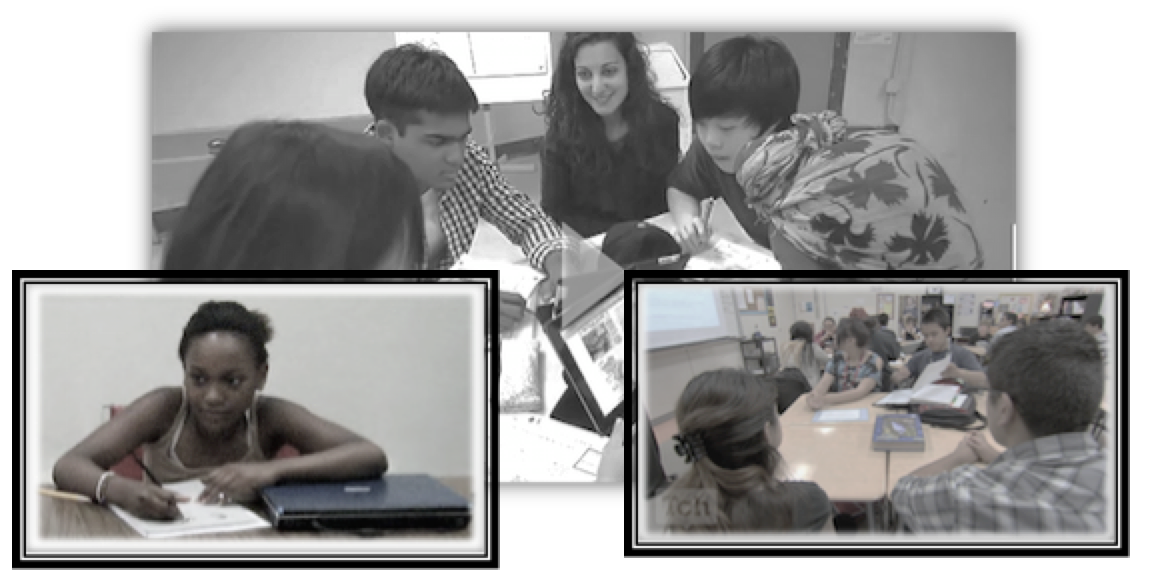Engaging 21st Century Learners
1. Introduction: Engaging Learners
One can lead a student to the classroom, but whether the student will learn depends entirely on engagement, especially for the 21st century learner. Relevant and authentic learning experiences are those that lead to the highest student engagement (High & Andrews, 2009). Studies continue to show that the crucial components to student engagement are behavior and cognitive affect, or student learning. Cognitive affect may vary however, with a greater degree of engagement needed in inclusion classrooms. This degree will depend on typical development of students and those with IEPs. (Linnenbrink & Pintrich, 2003; Rhodes, 2007; Skinner & Belmont, 1993 In: High & Andrews, 2009). What are the signs of student engagement?
 Achievement
Achievement- Task persistence
- Regular attendance
- Sustained attention
- Excitement and interest for a subject
- Aspirations for further education (Rhodes, 2007 In: High & Andrews, 2009).
While it isn’t realistic to expect that all we ask students to do will be “fun” or even engaging, we can intermix them with learning opportunities that meet their interests in what they do now, and what they’ll do in the future. It doesn’t mean we need to boost their self-concept with each activity either. It means that we need to make all curricula relevant to students’ lives, then scaffold to and from everything else in an exploratory climate of high expectations (High & Andrews, 2009).
High and Andrews identify elements of an engaging curriculum as:
- Having student voice
- Honoring students’ questions because they are “filled with curiosity”
- Embracing their interests while tapping into their lives and experiences
- Allowing students to participate in decisions about their learning
Studies on student perceptions for learner engagement indicate three ultimate elements to an engaging curriculum (Bishop & Pflaum, 2005 In: High & Andrews):
- Active learning
- Relevant curriculum
- Individual pacing
Relationships forged among administrators and teachers are also pivotal to student engagement, because without administrative support, the likelihood teachers will create and maintain a safe and nurturing learning environment will or can lessen. Students need a warm learning environment to facilitate the risk-taking and participation demanded of an engaging 21st century curriculum. Administrative establishment of tone, policy, teacher regard, rapport and sense of community are crucial. Teachers who feel supported in what they do in the classroom are more likely to establish and maintain a nurturing and engaging classroom environment (Katz, Noddings & Strike, 1999 In: High & Andrews, 2009).
What are the learning hooks we can use to reel and keep students in?
- Find out what their curiosities are and build on them through civic involvement, recognition for achievement, learning differences, participation in decisions about learning. Use technology hardware or software, in keeping with the mandates of the IEP. Maintain accurate records for the data presented at case-specific team meetings.
- Hands-on learning via trips, virtual or real
- Weekly discussion of current events with video, podcasts and Internet news feeds
- Production of media used to convey information to parents
- Teaching students how to utilize print and visual elements in media sources to support their ideas as evidence. For example, ask them who a person is in a picture or painting displayed in a text, what a subtitle means, or what pictures or captions mean to the passage or story overall message
- Chunking out a media curriculum in short segments to facilitate discussion. For instance, show a video and discuss a segment at a time, have students take notes and ask questions before moving on to the next segment
- Discussing the overt and implied messages of each media source and then aid students in linking it to core content
- Use of iPads to drive hybrid instruction, such as responding to discussion forums, researching and problem solving via the Internet and then sharing results in whole class discussion
- Use of Smartboards to demonstrate strategy - writing on demand, locating and using evidence, smart Internet research, ethical use of (and respect for) copyright.
- Encouraging students to download or copy images and captions to use in their research or in extended projects by including the captions and citing their sources. Teach and model this process (Project Look Sharp in: Schiebe, 2004).
Schiebe, C. (2004). A deeper sense of literacy: Curriculum-driven approaches to media literacy in the K-12 classroom. The American Behavioral Scientist, 48(1), 60-68.
Servilio, K. L. (2009). You Get to Choose! Motivating Students to Read Through Differentiated Instruction. TEACHING Exceptional Children Plus, 5(5) Article 5.